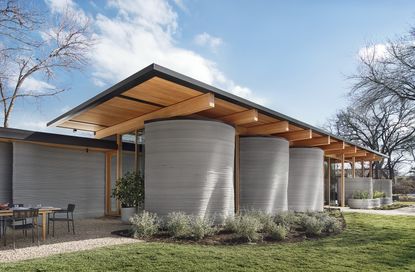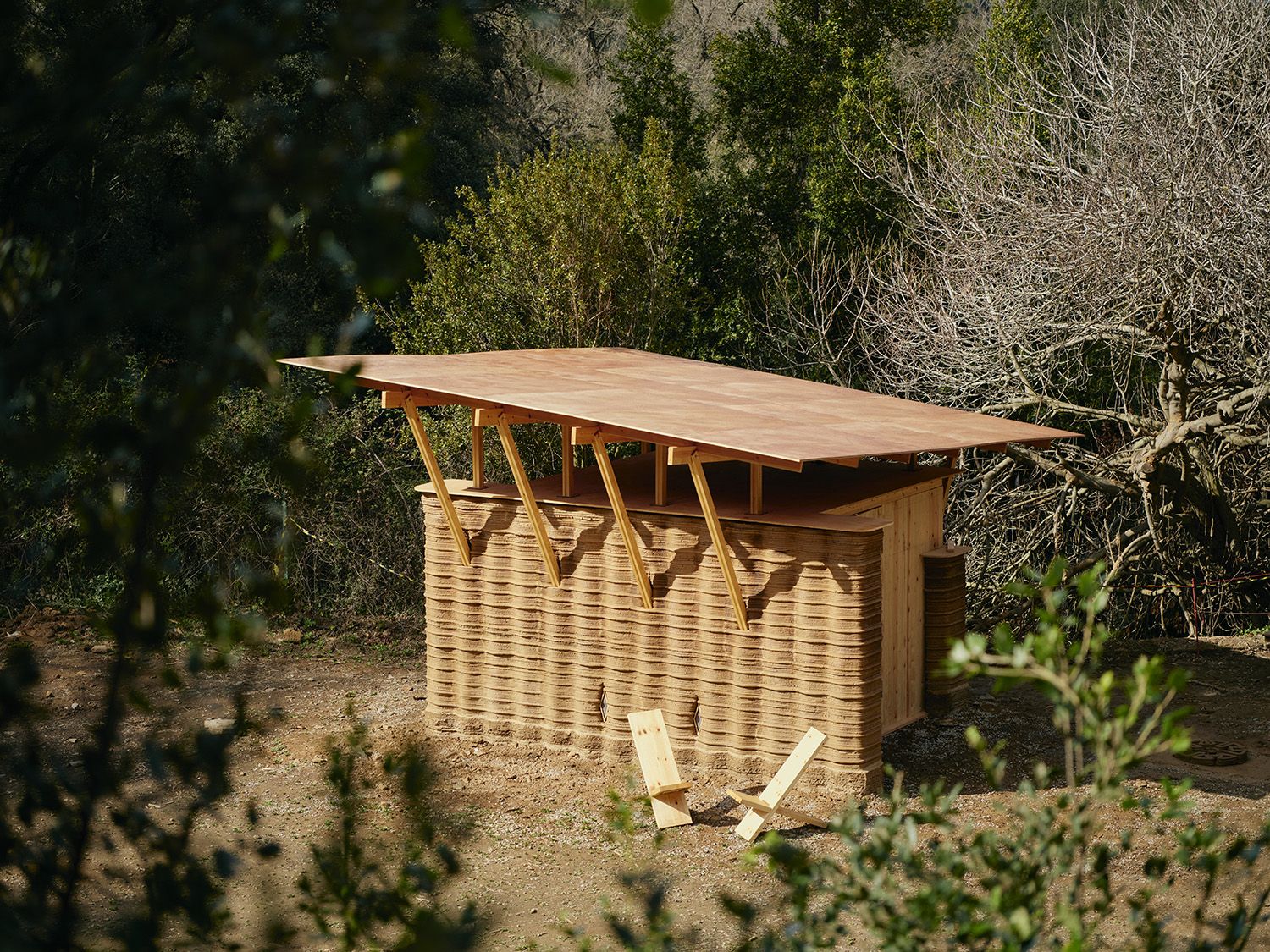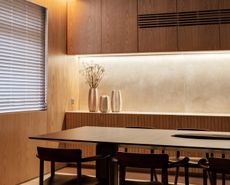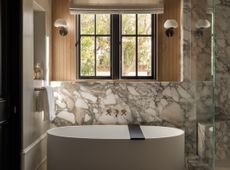8 new architecture trends for 2023 that will change how you're going to live
Architecture trends are here to answer the problems faced by us all today, from sustainability to cost, time and space

The way we want to live is changing fast, and a new set of architecture trends is emerging to answer the problems faced by modern life. More space, more storage, more flexibility. Lower rents, a higher resistance to climate change and cheaper costs to build. Sustainability. These are all at the forefronts of architects' mind as they create today to design a world for tomorrow.
Traditionally, changes in how buildings are made moves slower than your classic interior design trends. It takes years to develop new technology and understand new materials, or to find ways to use old materials in increasingly innovative approaches. Pushing the limits of our built environment, these bold new ideas are shaping the future of todays’ architecture.
'The biggest problems people face today are around sustainability and space,' says award-winning architect Ben Allen of Studio Ben Allen. 'And how buildings can be built more efficiently to be more sustainable and give you more square footage.'
Happily, the most exciting architecture trends emerging for next year take both these issues into account, changing the way we're all going to live.
Architecture trends for 2023
1. 3D-Printed Designs

Architecture by Lake Flato Architects
In an age when the home printer feels out of date, architecture made via 3D printing is all the rage. What’s the big deal? Much of the waste associated with new buildings results from a fragmented construction process – too many steps, too little time – which is why architects are looking toward 3D-printed structures as the new way to optimise construction with minimal waste.
But it’s not just about cutting labor time and streamlining logistics; 3D-printed designs enable all sorts of curvy, textured forms best managed by a machine while also allowing architects to dream up high-precision architectural models from the get-go.
The bigger bonus here is the ease in which these designs can be replicated across the globe, in hopes of creating a commercially viable, streamlined and sustainable approach to architecture – architecture for the masses without the massive headache.
In partnership between Lake Flato Architects and Icon, a start-up specializing in 3D printing robotics, ‘House Zero’ in Austin, shown above, shapes up as a handsome ranch-style home. The 3D-printed walls, piped in undulating layers, skip many of the steps associated with conventional construction – a proper curveball for the industry.
2. Using earth

Architecture by IAAC
This itty-bitty tiny house design called ‘TOVA’ by IAAC claims to be the first 3D-printed building - another example of the first trend - made using all local material. It’s literally made from local earth, in seven weeks and with zero waste.
Located in Spain, the concept was born from the desire to create a solid, easily replicated prototype for sustainable housing, a small-scale step in the right direction.
3. Hemp

Design by Ideo Arquitectura
Among the pioneering materials flexing their steel, ‘biomaterials’ are giving carbon-hungry defaults like concrete an honest run — we always return to nature, do we not? Novel construction materials like hempcrete, a biocomposite long popular in Europe and months ago approved for use in the United States, yield promising returns.
Hemp sequesters large amounts of CO2, and compared with trees, grows faster in less space, while fellow plant-based materials (think bamboo, cork, and even algae) are proof that architecture can blur the lines between nature and our built environment. Is it progressive architecture, or back to basics thinking? A bit of both, natch.
And why stop at just one bio-based material? This ‘Natural Home’ in the Balearic Islands, above, designed by Ideo Arquitectura, was primarily constructed with hemp to increase thermal capacity and decrease its footprint. Additional materials (such as clay, lime, wood, and a local stone called marés) dig even deeper.
4. Cork

Design by Atelier SAD and Iveta Zachariášová
We've seen it in flooring trends, and now cork, a renewable and biodegradable material long used in interiors, is breaking outside in the form of sustainable cladding.
Here, a family home in the Czech Republic by Atelier SAD and Iveta Zachariášová is clad in Portuguese cork panels, picked for their weather-resistant and thermal benefits – and luckily, they aren’t too hard on the eyes.
5. Wood in cities

Design by The Brooklyn Home Company and MESH Architectures
Wood might not seem groundbreaking in the construction industry, but Timber House, a mass-timber condo in Brooklyn by The Brooklyn Home Company and MESH Architectures, upends the idea that cities are built with concrete and steel.
The stronger-than-steel and fire-resistant beams are thoughtfully exposed throughout six stories, proving this carbon friendly material is on the rise.
6. Buoyant Buildings

Design by MAST
As far as pioneering architecture goes, there may be no location more alluringly far-out as the water. A raft of floating modern homes, buoyed by innovative materials and technology that allow familiar structures with proper height, have quickly moved once-upon-a-time renderings into reality. Anything from floating public saunas in Seattle to entire floating cities in South Korea are leading the charge, often with an extra dose of sustainable design from green roofs to self-generated power.
The most important part? The bulk of these designs factor in inclement weather, and are often hurricane and flood-proofed for what future climate scenarios might bring.
Along with support from Hubert Rhomberg and FRAGILE, Copenhagen-based firm MAST has broken ground with Land on Water, a new system that promises a flexible design for floating buildings, above. The flat-pack units, designed with recycled reinforced plastic, are modular and can easily cast about the globe.
7. Portable Structures

Design by Moliving
To say that portable homes are new wouldn’t be accurate – we’ve long hitched our nomadic daydreams on the concept of mobile homes. But renewed interest in sleek prefabricated structures is spurred by rising costs of rents and mortgages. These nimble pieces of architecture often have social benefits, touted as one solution to the affordable housing crisis: space for those without the fortune of land, making micro and moveable structures just the ticket.
Moliving, above, has shown how portability is breaking into hospitality thanks to these moveable ‘pods’ in the United States that contain a proper hotel room complete with distinct living, sleeping, and working areas. Billed as the world’s first nomadic hotel concept, the prefabricated pods can be moved with ease all about your property – perfect for anyone dreaming of opening an Airbnb.
8. Levelled up tiny homes

Rooted in the mission to provide affordable living options, Ireland’s Common Knowledge partnered with the UK’s Margent Farm, which grows hemp in Cambridgeshire, to create these two-level TIGÍN Tiny Homes on wheels.
The 215 square-foot space flexes sustainable materials beyond hemp, like cork insulation and natural rubber linoleum flooring, and their simple designs can even be built by hand.
Be The First To Know
The Livingetc newsletter is your shortcut to the now and the next in home design. Subscribe today to receive a stunning free 200-page book of the best homes from around the world.
Keith Flanagan is a New York based journalist specialising in design, food and travel. He has been an editor at Time Out New York, and has written for such publications as Architectural Digest, Conde Nast Traveller, Food 52 and USA Today. He regularly contributes to Livingetc, reporting on design trends and offering insight from the biggest names in the US. His intelligent approach to interiors also sees him as an expert in explaining the different disciplines in design.
-
 How Can I Hide the Lights Under My Kitchen Cabinets? 4 Effective Ways to Conceal Wires
How Can I Hide the Lights Under My Kitchen Cabinets? 4 Effective Ways to Conceal WiresWhile undercabinet lights are super practical, they have a small downside — their visible network of wires can spoil the look of the room. Experts tell us how to hide this eyesore
By Aditi Sharma Maheshwari Published
-
 5 Things People With Flattering Bathrooms Never Have — (And You Shouldn't Either!)
5 Things People With Flattering Bathrooms Never Have — (And You Shouldn't Either!)Designers say you should avoid these five things if you want a bathroom that flatters your reflection and therefore uplifts your mood
By Oonagh Turner Published

